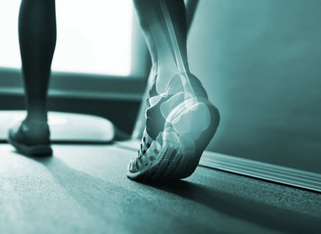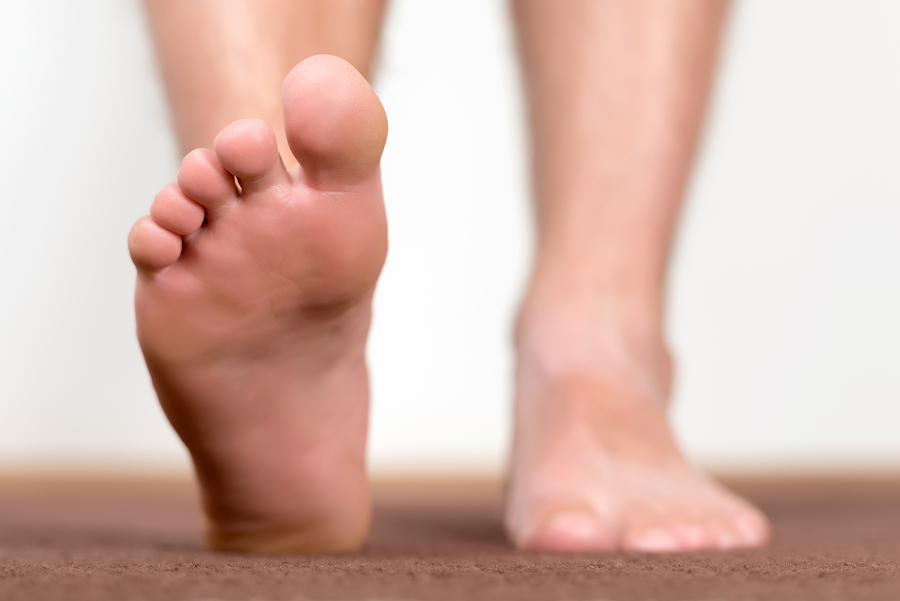The loading and unloading principles of our feet (called pronation and supination respectively) are instrumental in the overall function of our lower extremities and spine. There is an entire industry of footwear companies, athletic apparel, commercial insert companies and medical professionals who devote millions of dollars and resources to evaluate and offer services to address abnormal foot mechanics.

For the purpose of this article, I will focus on how our clinic evaluates and effectively weans which options are best for our physical therapy patients. To start, it is important to have a good understanding of foot mechanics in general.
The foot is broken up to 3 major areas: forefoot, mid foot, and rear foot. When the foot hits the ground in standing or walking, the rear foot (heel) will pronate and begin the loading process of accepting body weight. When that happens, a chain reaction occurs in the rest of the foot and translates forces up to the ankle, knee, hip and spine.
Barring any structural abnormalities, this process will happen in a predictable amount of motion and in a proper sequence. The amount of motion at each joint is a value that our therapists can repeatedly measure in relation to the desired activity. Any disruption in this chain reaction can often lead to foot problems (like plantar fascitis), knee pain, hip bursitis, and even lower back pain. Likewise, if there is an interruption, or a few areas of dysfunction, we begin to get an idea of what kind of action plan will be necessary to correct the sequence.

So what are your options? These vary depending on the degree of abnormal foot mechanics as well as various limitations in flexibility, joint mobility, and strength of the rest of the leg. Since we are all different shapes and sizes with different needs, our interventions need to be tailored accordingly. Typically our office will begin with joint mobilization and other manual techniques, stretching, and strengthening exercises performed in office and in combination with home exercise prescription. Many times, this is enough to decrease symptoms and prevent them from returning.
For the more stubborn cases, a detailed foot exam is completed to evaluate whether footwear changes or orthotics are appropriate. This can range as simple as changing the brand of running sneaker, to as advanced as referrals to a podiatrist or orthopedist to have custom orthotics fabricated from moulds. There are also middle of the spectrum options such as semi-custom and off the shelf inserts. The less custom an insert is, the less tailored to the individual difference between right and left feet, as well as the differences between person to person.
There is also an industry variance between the costs for orthotics. Some of the costs fluctuate due to the different types of materials used, the level of custom versus non-custom design, the medical provider that provides the orthotics, as well as the amounts insurance companies may or may to cover under patients’ plans.
To date, there are very few reliable research studies that demonstrate conclusive evidence of which options work best. By the time most clients seek our services, they often have a history of trial and error until they “find what works for them”. Or they experience painful joints or foot conditions that precipitate them trying inserts.
In my biased opinion, it is important for our team of physical therapists to screen every low back, hip, knee and ankle/foot patient to see if shoe inserts or orthotics may be appropriate. As I mentioned earlier, often patients do not need more than the right manual therapy, stretching and strengthening techniques – but for those who do, if you’re not screened than how will you get all better? Certainly a detailed screen can be a helpful guide to ensure foot and lower extremities mechanics are happening in the correct amount and sequence to allow use optimal performance.
Michael Dow MSPT CEO/Director received his degree in physical therapy from Sacred Heart University .He founded Amity Physical Therapy eleven years ago and now maintains offices in Woodbridge, Hamden and Branford. He has been recognized by the US Dept of Health and Human Services for his work with the National MS Society. Michael also received his certification through the Titleist Performance Institute and works with golfers of all ages and skill levels to achieve optimal performance and prevent injury. He can be reached at the Woodbridge office at (203) 389-4593. Or visit www.amitypt.com


